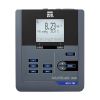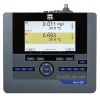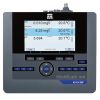YSI IDS 4310 Digital Conductivity & Temperature Probe
Features
- Plug and play connectivity with each instrument
- IDS sensors store their own unique ID with serial number and calibration data
- Digital sensor recognition, processing and data transfer
- Free ground shipping
- Expedited repair and warranty service
- Lifetime technical support
- More
Overview
The YSI IDS sensors automatically store their unique serial number and calibration data. In addition, they also digitally process the measurement signal. The sensors can be moved from instrument to instrument and maintain their calibration data and transmit this information to the new instrument.
*The IDS 4310 conductivity/temperature probes can only be calibrated with 1,413uS/cm standard.
Type: 4-electrode, graphite
Conductivity Range: 10 µS/cm to 2,000 mS/cm +0.5% of value
Resistivity: 0.5 Ohm cm to 100 kOhm cm +0.5% of value
Salinity: 0.0 to 70.0 ppt +0.5% of value
Total Dissolved Solids: 0 to 1,999 mg/L; 0.0 to 199.9 g/L +0.5% of value
Temperature Range: 0 to 100ºC (32 to 212ºF)
Temperature Accuracy: +/-0.2ºC
Cell Constant: 0.475 cm +/-1.5%
Material: Epoxy
Dimensions: Length 120 mm (4.7 in); diameter 15.3 mm (0.6 in)
Warranty: 2 years
In The News
Wildfire Prevention in the Sierra Nevada Region with the Yuba Watershed Institute
Though recent wildfires have sparked new conversations about wildfire management and response, groups like the Yuba Watershed Institute have been monitoring the forests and water resources of the Sierra Nevada region for decades, managing approximately 5,000 acres of land with the Bureau of Land Management (BLM) and about 7,000 acres in private land partnerships. The goal of the Institute is to work with local communities and land agencies to improve watershed and forestry management through informed practices and public outreach. The goals of the Yuba Watershed Institute are three-fold: Improve the ability of fire suppression agencies like the California Department of Forestry and Fire Protection ( CAL FIRE ) and the US Forest Service.
Read MoreWave Sensors Integration with NexSens Buoys: A Cutting-Edge Solution for Wave Measurment
Real-time wave data supports accurate weather prediction, safe and efficient maritime operations, and provides valuable safety and operating condition information for recreation and commercial fishing. Understanding wave dynamics also helps with the design of protective coastal structures like seawalls, breakwaters, and jetties. It also supports better prediction of their impact on sediment transport and coastal geomorphology. Wave data is a key factor in qualifying and designing offshore wind farms and harnessing kinetic energy for electrical generation. It helps with the understanding of ocean-atmosphere interactions and contributes to studies of sea-level rise and climate change impacts.
Read MoreSpring 2025 Environmental Monitor Available Now
In the Spring 2025 edition of the Environmental Monitor, we highlight partnerships across the world and the importance of collaboration between government agencies, universities, environmental groups, local communities, and other stakeholders. From great white shark research in Cape Cod to monitoring fisheries in Lake Erie, this latest edition underscores partnerships that connect stakeholders in a watershed through environmental data. With an emphasis on data sharing, a combination of real-time and discrete sampling keeps the public and partners informed of environmental conditions. Our writers also sought out science professionals dedicated to working with peers within and outside of the environmental sector.
Read More











